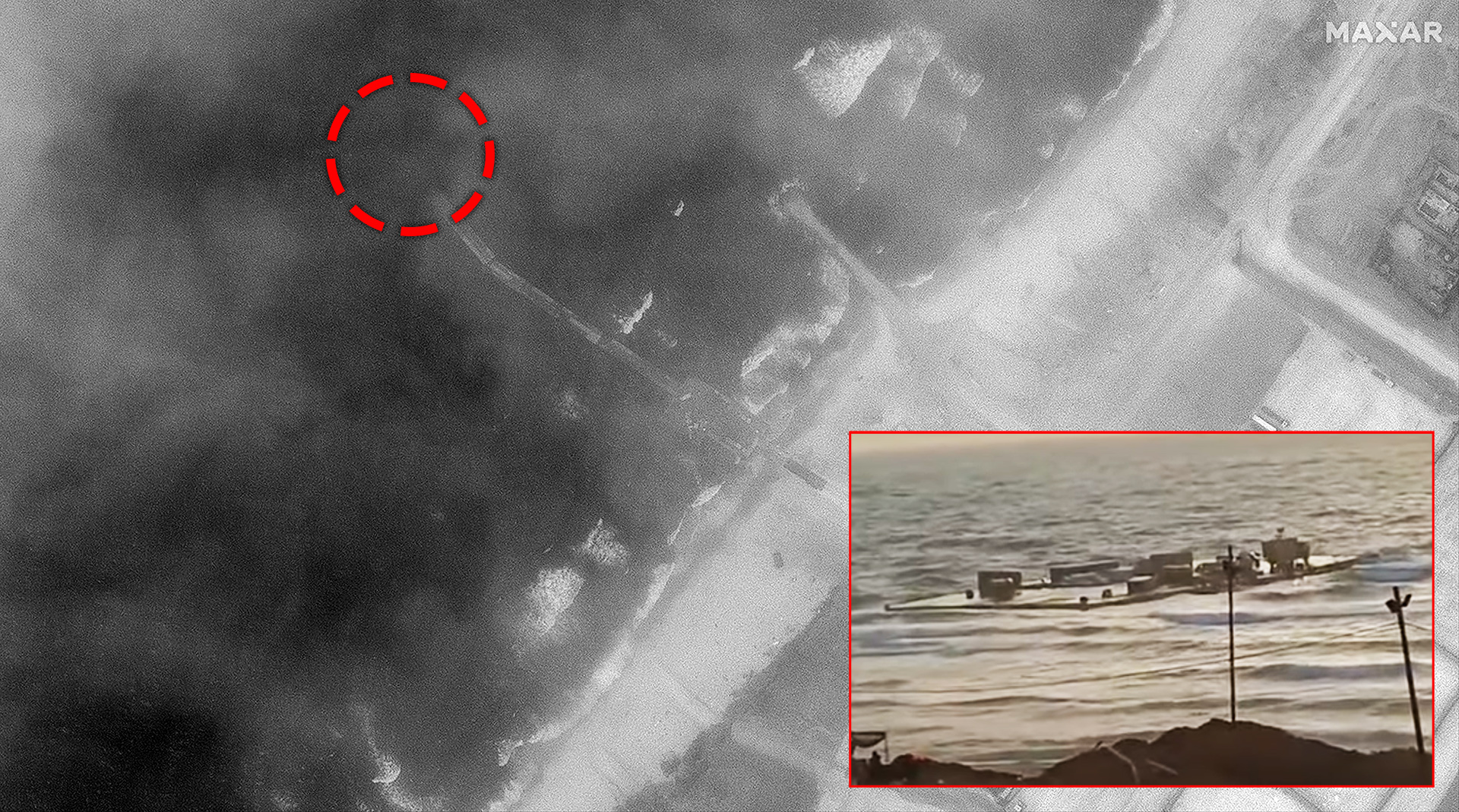The Biden administration’s $320 million floating pier broke apart in heavy seas earlier today less than two weeks after being installed, delaying the flow of badly needed humanitarian aid to war-ravaged Gaza, the Pentagon announced.
“Over the next 40 hours, the Trident Pier will be removed from its anchor position on the coast and towed back to Ashdod where US Central Command will conduct repairs,” Sabrina Singh, a Pentagon spokesperson, told reporters, including from The War Zone. “The rebuilding and repairing of the pier will take at least over a week.” The pier will then be towed back and reinstalled, she added.
A satellite image taken Monday by Maxar, provided to The War Zone, shows the section of the Trident Pier furthest from the beach is missing. This landing area is where vessels drop off goods which are then transported by trucks across the long floating causeway and taken into Gaza. That section was recovered, Singh said.
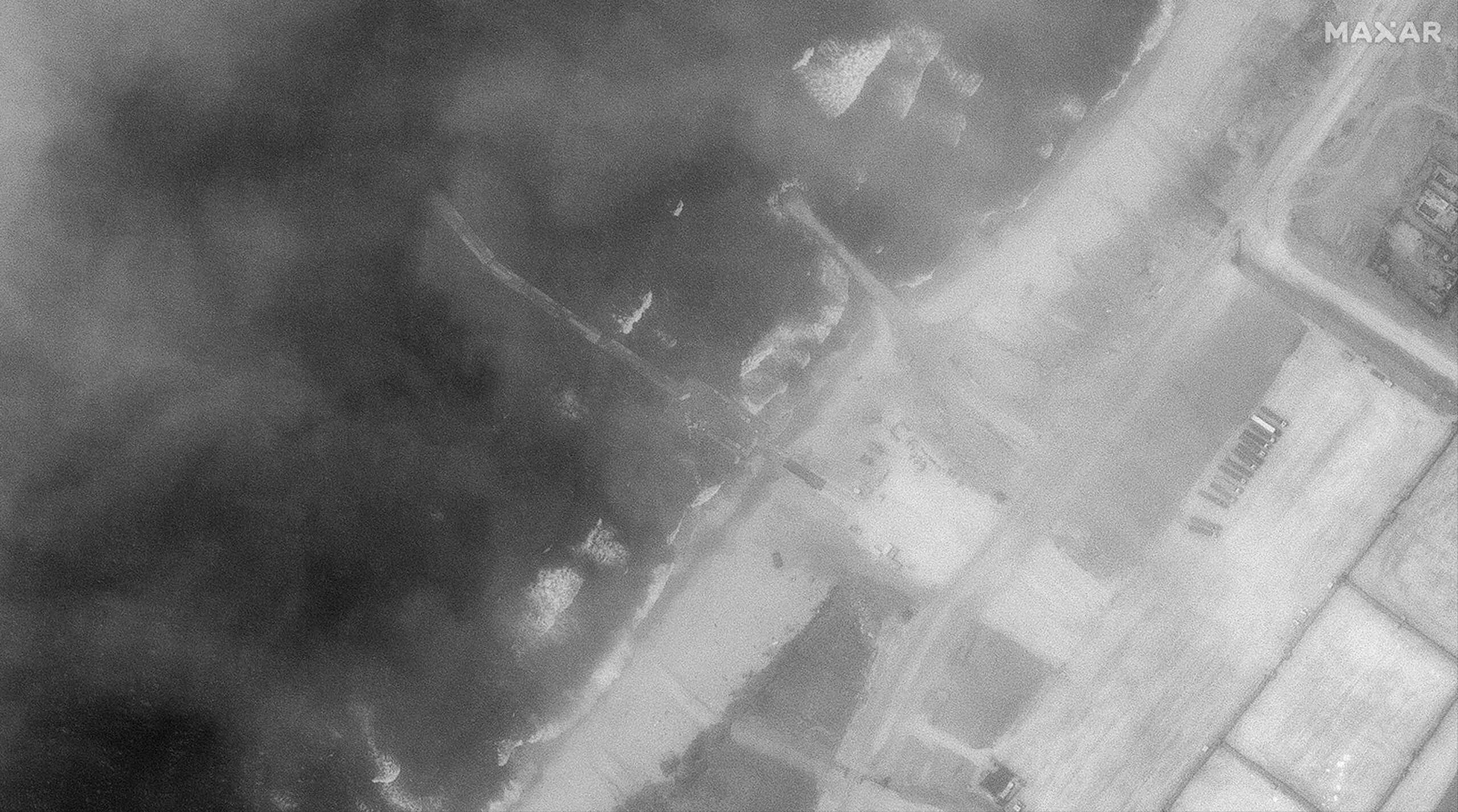
The missing section of the pier was still in place as of May 26, according to Maxar imagery.
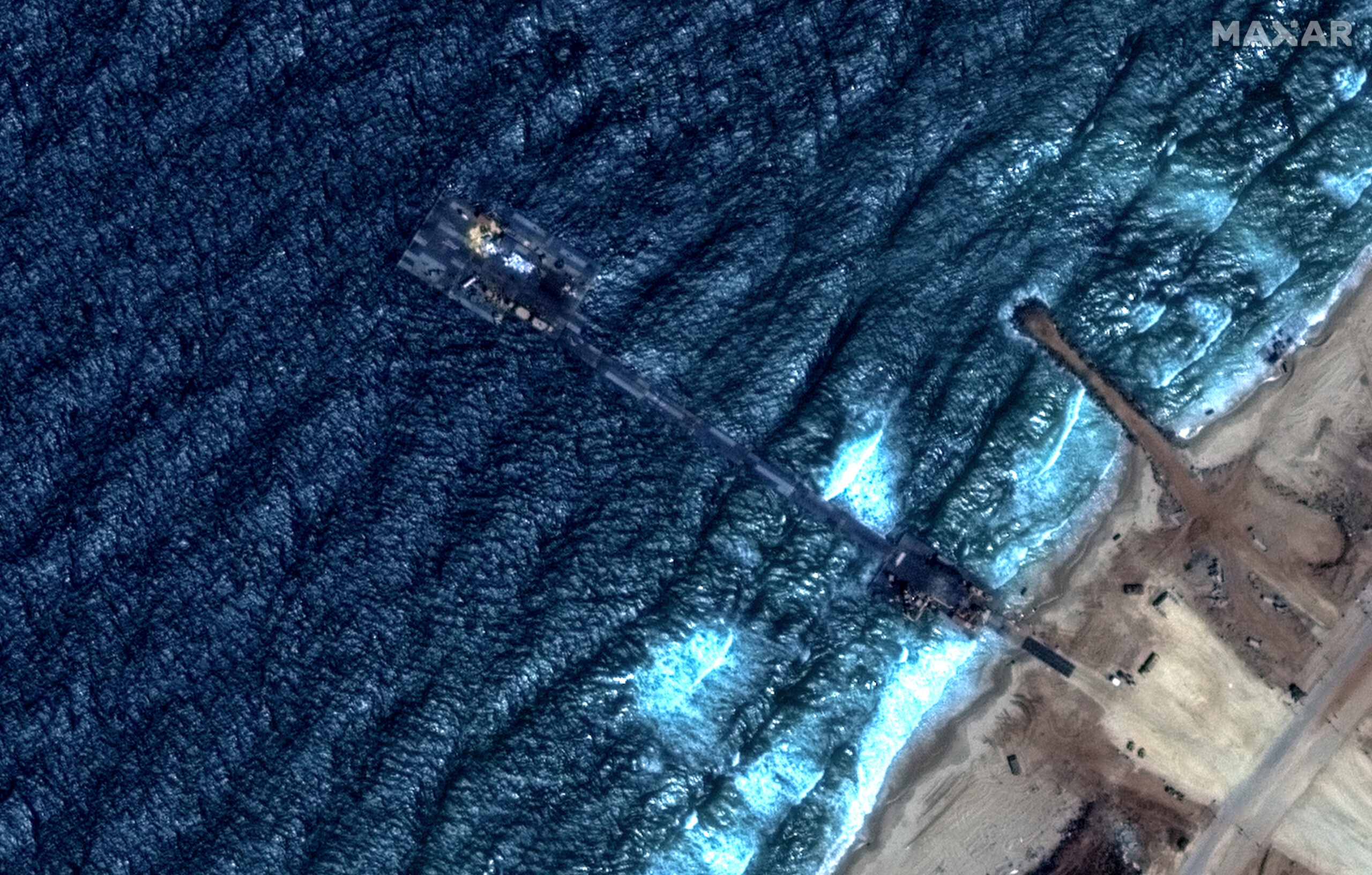
Additionally, a short video posted to YouTube by an Israeli soldier on Monday purports to show part of the pier floating semi-submerged off the coast.
The Israeli Defense Forces soldier who shot the video is overheard saying: “This is what happens when you help the enemy,” according to the Jewish Press.
The War Zone cannot confirm that the video actually shows the pier “T” section that dislodged. but it certainly looks exactly like it. The heavy seas left parts of the pier and smaller vessels strewn across the Gaza and Israeli shoreline. We’ve reached out to the Pentagon and U.S. Central Command for more details and will update this story with any pertinent information provided.

To date, 1,000 metric tons of aid has been delivered through the pier. Singh said she did not have any specific figures on how the delay will affect that flow. In addition, three U.S. troops have been injured, one critically, in non-combat incidents during the aid effort, she added.
The critically injured soldier “was working on the staging platform two miles off the coast of Gaza, where trucks filled with aid packages are driven from cargo ships onto Army watercraft,” according to USNI News. “At the time of the injury, the roll-on roll-off cargo ship MV Benevides was attached to the platform.”
The U.S. military finished building the floating pier on May 16, though the basic construction work on the temporary pier was completed nearly two weeks earlier. However, poor weather delayed it being placed into its final position. Construction of the Joint Logistics Over-The-Shore (JLOTS) capability was ordered two months ago.
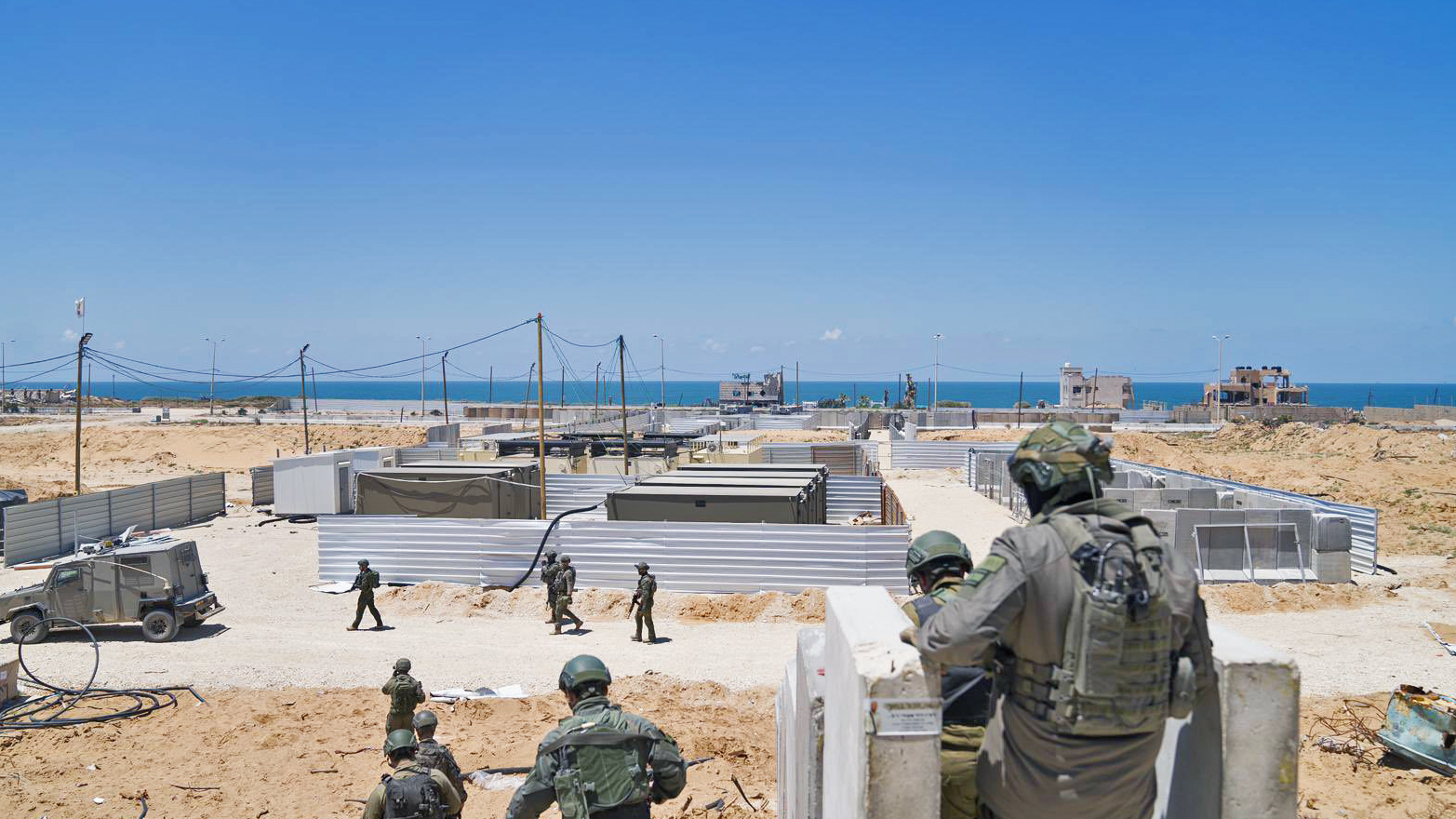
The satellite image of the storm damaged pier was taken days after CENTCOM officials acknowledged that four U.S. Army vessels supporting the maritime humanitarian aid mission “broke free from their moorings,” CENTCOM said in a May 25 media release.
At the time, two vessels were anchored on the beach near the pier, CENTCOM stated.
“The third and fourth vessels are beached on the coast of Israel near Ashkelon,” according to CENTCOM. “Efforts to recover the vessels are underway with assistance from the Israeli Navy.”
No U.S. personnel “will enter Gaza,” CENTCOM added. “No injuries have been reported and the pier remains fully functional.”
“As of today, one of the Army vessels that was beached on the coast of Israel near Ashkelon has been recovered,” Singh told reporters on Tuesday. “The second vessel that was also beached near Ashkelon will be recovered in the next 24 hours, and the remaining two vessels that were beach near the Trident Pier are expected to be recovered in the next 48 hours.”
You can see video and images of the beached vessels below.
Even though aid has been delivered to the beach, issues on the ground prevented some of that precious cargo from being delivered, Navy Vice Adm. Brad Cooper, deputy CENTCOM commander, told reporters on May 23.
“Despite being miles away from the pier, a recent Hamas drone attack on the IDF prompted a swift counterattack, leading to the temporary shutdown of humanitarian convoys around Gaza for safety reasons,” Cooper said. In addition, “we were alerted to potential looting along a prearranged distribution route, necessitating the development of an alternate, safer path.”
The Trident Pier is one of three methods aid is coming into Gaza. There are also land routes and humanitarian aerial aid drops. Singh said that the land routes are the most important and that more needed to be opened as soon as possible.
It is unclear at the moment how long it will take to repair the pier and when the flow of badly needed aid into Gaza will resume.
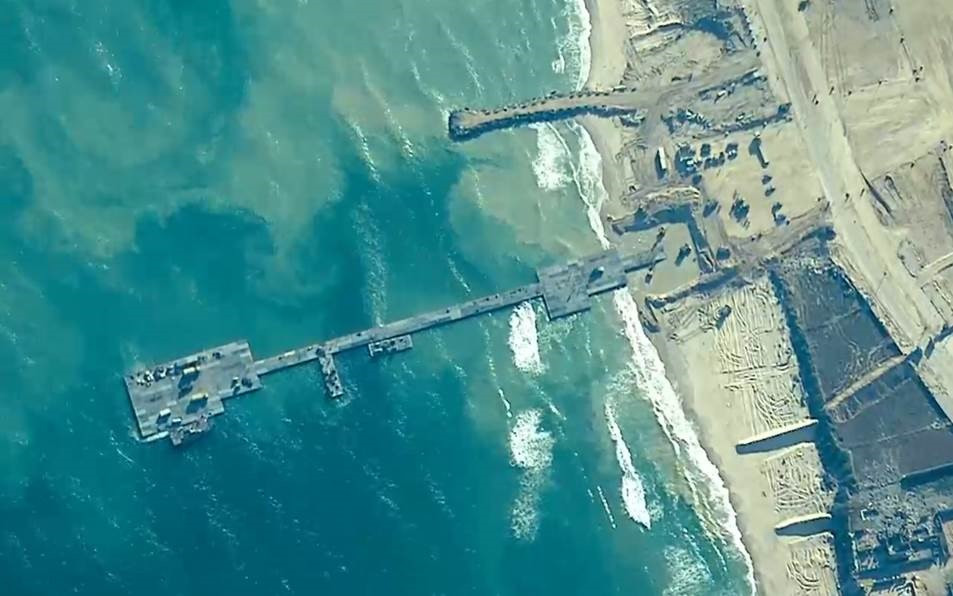
However, it is another example of the difficulty of bringing in aid through a beach that U.S. troops are not supposed to set foot on. Time is another challenge, with only a few more months of relatively decent weather remaining.
“Historically, by early September, the seas begun to rise and Mother Nature gets a vote here,” said Cooper.
This is a developing story.
Contact the author: howard@thewarzone.com
